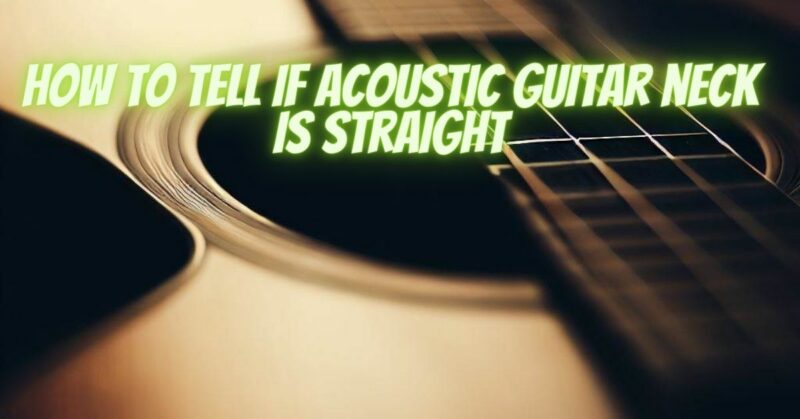The straightness of the neck is crucial for the playability and overall performance of an acoustic guitar. A straight neck ensures proper string action, intonation, and comfortable playing experience. In this article, we will provide you with a step-by-step guide on how to assess the straightness of an acoustic guitar neck, allowing you to identify any potential issues and make necessary adjustments.
Checking for Neck Straightness:
- Visual Inspection: Hold the guitar at eye level and look down the neck from the headstock to the body. The neck should appear straight, with a slight forward bow or relief. A slight concave curve (upward bow) is often desired for acoustic guitars to prevent buzzing and maintain proper string action.
- Fretting Test: Press down the low E string (sixth string) at the first fret, simultaneously press down the same string where the neck meets the body (around the 14th fret). Observe the gap between the string and the frets around the 7th to 9th frets. There should be a slight gap, around the thickness of a business card. If the gap is significantly larger or smaller, it may indicate an issue with neck straightness.
- String Clearance Test: Hold down the low E string at the highest fret (around the 12th to 15th fret) and observe the gap between the string and the frets around the middle of the neck. There should be a small gap (approximately the thickness of a business card) between the string and the frets. If the string is touching or buzzing against the frets, the neck may have excessive forward bow or relief.
- Use a Straight Edge: Place a straight edge, such as a ruler or a specialized guitar straight edge, along the length of the neck. It should make contact with the neck at three points: the headstock, around the middle of the neck, and near the body joint. Check for any gaps or significant deviations between the straight edge and the neck. If there are noticeable gaps, the neck may have excessive bow or backbow.
Adjusting Neck Relief: If you find that the neck has excessive bow or backbow, you may need to make truss rod adjustments to correct the neck relief. It’s important to note that truss rod adjustments should be approached with caution and, if unsure, it is recommended to seek assistance from a professional guitar technician. Here are some general guidelines for adjusting neck relief:
- Truss Rod Adjustment: Most acoustic guitars have a truss rod accessible through the soundhole or the headstock. Consult your guitar’s user manual or manufacturer’s guidelines for the correct procedure to adjust the truss rod. Make small quarter-turn adjustments at a time, allowing the neck to settle before reassessing the straightness.
- Seek Professional Help: If you are uncertain or uncomfortable making truss rod adjustments, it is advisable to seek assistance from a qualified guitar technician. They have the expertise and tools to properly evaluate and adjust the neck relief.
Conclusion:
Assessing the straightness of an acoustic guitar neck is an essential skill for guitarists. By visually inspecting the neck, performing fretting and string clearance tests, and using a straight edge, you can identify any issues with neck straightness. If adjustments are required, exercising caution and seeking professional assistance, especially when dealing with the truss rod, is recommended to prevent damage to the instrument. Regularly checking and maintaining the straightness of the neck will ensure optimal playability and enjoyment of your acoustic guitar for years to come.


